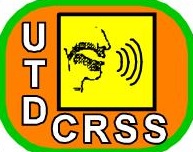FAQs: Frequently Asked Questions CCi-MOBILE (Click the question for answers)
A lot!![]() The research platform allows researchers to investigate new HA/CI signal processing, record audio in naturalistic conditions, test real-time algorithms on HA/CI stimulated processors, enable in-lab, in-booth, and field experiments, and exploration of signal processing parameters, MAP parameters, and processing pipelines with more freedom than manufacturer research interfaces.
CCi-MOBILE is written in a low-level language environment (MATLAB) with a large number of template user-interfaces, basic implementation, easy-to-adjustment MAP/signal processing parameters, and general applications such as an audio recorder, a visual temporal audio signal, and so much more.
The goal of developing the CCi-MOBILE research interface was to stimulate the field of speech science by providing a tool to allow the investigation of otherwise proprietary signal processing techniques and field experimentation outside the general confinements of the sound booth. For applications of how to use CCi-MOBILE for your research, we encourage you to attend one of our conference workshops at appropriate meetings (Acoustical Society, Alliance of Cochlear Implants, Conference on Implantable Auditory Prosthesis, etc.).
The research platform allows researchers to investigate new HA/CI signal processing, record audio in naturalistic conditions, test real-time algorithms on HA/CI stimulated processors, enable in-lab, in-booth, and field experiments, and exploration of signal processing parameters, MAP parameters, and processing pipelines with more freedom than manufacturer research interfaces.
CCi-MOBILE is written in a low-level language environment (MATLAB) with a large number of template user-interfaces, basic implementation, easy-to-adjustment MAP/signal processing parameters, and general applications such as an audio recorder, a visual temporal audio signal, and so much more.
The goal of developing the CCi-MOBILE research interface was to stimulate the field of speech science by providing a tool to allow the investigation of otherwise proprietary signal processing techniques and field experimentation outside the general confinements of the sound booth. For applications of how to use CCi-MOBILE for your research, we encourage you to attend one of our conference workshops at appropriate meetings (Acoustical Society, Alliance of Cochlear Implants, Conference on Implantable Auditory Prosthesis, etc.).
The CCi-MOBILE can be rented on a monthly/annual subscription basis or can be purchased for full ownership with a certain fee. As an academic organization, CRSS-CILAB at UT-Dallas is committed to enhancing the research opportunities of scientists investigating CI systems. We have no interest in deriving funds from this product, however there are real costs in producing, maintaining and upgrading the hardware platform. As such there is a fee for obtaining the platform, which include purchase or leasing. All funds obtained are funneled back to produce more platforms and support those in the field. A detailed description of the membership tiers can be found under the Subscription Tiers of the UT-Dallas CI Lab website. An overview video of these subscription tiers can be found on the Home page of the UT-Dallas CI Lab website or on our YouTube page. For further information please send an email to- [email protected]
Yes! Subscription tiers can be transferred from one tier to another. If any institution with a Silver or Gold membership (monthly/annual subscription) would like to increase their status to Platinum or Platinum Plus memberships (ownership of device), the institution will be credited with the amount of time/monetary value from prior membership status and only charged the remaining balance of the higher membership. To downgrade from Platinum or Platinum Plus membership to Silver or Gold membership, please contact us.
Yes! If you are a U.S. researcher supported by NIH, it is possible to request a supplement to obtain the CCi-MOBILE platform. Contact us for a sample request form for NIH.
Hardware sustainability. The original intent of the releasing CCi-MOBILE to other institutions was to stimulate the field of hearing sciences and engineering by providing a free, open-source platform. While the software suite can be easily maintained as many of the CI Lab members use the software on a daily basis to implement their own research endeavors, the hardware component poses a real cost to UT-Dallas. The research interface requires various hardware components, some of which have been donated from Cochlear Corp. The development of the subscription-based program was not to turn a profit but to sustain the cost of the hardware from UT-Dallas.
Yes! A comprehensive "burn-in" testing paradigm was developed by the CRSS-CI Lab to ensure that all stimuli generated from the CCi-MOBILE Research Platform never exceeded the maximum current limit (AAMI CI86, ISO 14708-7:2013). The results of this study were published in a 2018 INTERSPEECH paper that can be found here. This testing paradigm included a wide variety of acoustic conditions (e.g.- speech, language, noise, acoustic sounds etc.) all possible user-parameters (MAP characteristics and signal processing parameters), and data loss (integrity of the device).
Based on a subjective evaluation (N=8) of word and sentence recognition using CCi-MOBILE and the user’s clinical processor, a statistically equivalent performance levels were reported (p > 0.05) in a direct comparison investigation. The results of this study are waiting acceptance at EMBS-2019.
For direct-connect with CI users (RF communication directly to RF internal receiver and thus intracochlear array), a wired (not-wireless) behind-the-ear microphone is used to capture the audio and a wired (not-wireless, such as Kanso processors) RF coil is placed to the internal magnet.
The RF carrier rate is 5 MHz (same as Cochlear Corp. commercial products), and the data rate if 0.5Mb/sec using a UART data communication routines.
Battery life depends on the Android or Tablet PC. CCi-MOBILE draws its power through the USB connection between the device and the board. Using the Android setup (USB), the CCi-MOBILE Research Interface will continue processing until the Android phone battery is depleted. We recommend using a stock Android to eliminate other phone/tablet processes and optimize battery life during the field-testing phase. Using a Stock Android without any other application processes running besides CCi-MOBILE routines, the estimated battery life is 4 hours.
Using the tablet setup (USB), the CCi-MOBILE Research Interface will continue processing until the tablet (USB) battery is depleted. We recommend using a Microsoft Surface tablet with stand-alone MATLAB license without any other major software that will run idle processes during testing. Using the tablet setup (USB), without any other applications processes besides CCi-MOBILE routines, the estimated battery life is 3.5 hours. The battery life using Wi-Fi communication is currently undergoing testing.
CCi-MOBILE default processing strategy (CI only) is the Advanced Combination Encoding strategy (ACE) which is an ‘n-of-m’ strategy. This selects an ‘n’ amount of channels out of the total number of channels (‘m’). For Cochlear Corp., the total number of channels is the total number of electrodes which is 22. CCi-MOBILE stimulates electrodes sequentially using the Continuous Interleaved Sampling approach (i.e, only one channel/electrode is stimulated at a time). Researchers can investigate processing strategies that use CIS as the default strategy. For non-ACE processing, simply select ‘n-maxima’ to 22. More information on signal processing parameters can be found on the operating specifications manual on the Training and Documentation tab of the UT-Dallas CI Lab website.
Yes! Each university is responsible for obtaining approval from their own IRB. Some institution’s IRB may request the original IRB protocol approved for CCi-MOBILE to be included in addition to your institution’s petition for approval. If this is the case, please contact us and we would be happy to provide that information.
Currently, we only support unilateral and bilateral communication (direct-connect) with cochlear implants manufactured by Cochlear Corporation. Implant chip types include CIC3 and CIC4 (i.e. CI512, CI522, CI24RE, CI24). We do not support CI532 nor CI24R at the moment.
Any HA with a wired, audio-in connect are supported. Communication from the CCi-MOBILE research interface board to hearing-aids are enabled through a wired, audio-in jack. Additionally, behind-the-ear type hearing aid are also supported. Common manufacturers include: Starkey, GN Resound, Phonak, and Oticon
The software suite can be downloaded from the Software Downloads tab of the UT-Dallas CRSS-CI Lab website or our Github repository page.
The associated drivers can be downloaded from the Software Downloads page of the UT-Dallas CRSS-CI Lab website.
More information on the CCi-MOBILE Hands-On workshop at the 2019 Conference of Auditory and Implantable Prosthesis (Lake Tahoe, CA) is coming soon. Additionally, a press release (email and website) will be issued from UT-Dallas CI Lab’s center director, Dr. John Hansen before upcoming conferences/events.
A major malfunction such as a lack of response from the board to the host PC/Android and/or non-functioning platform ports (microUSB, HA audio in – L/R, RF in R/F, and CI audio in – L/R), and/or incorrect signal measured through an oscilloscope may require the institution/company to send back the platform for further root cause analysis. Troubleshooting can be performed with an oscilloscope. Instructions are written within in the function header with the software suite (see the MATLAB function: ‘RealtimeStimulatorScript.m’).
More information on what institutions/companies can request and how the CI Lab – UT Dallas will respond can be found on the UT-Dallas CRSS-CI Lab website in the Contact us tab.
Currently, sampling rate (sam/sec), inter-pulse-duration (us), and frame size (ms) are fixed to ensure real-time processing capabilities and other signal processing pipelines. For researchers looking at investigating new hearing-aid strategies, note that clinical hearing-aids use a high sampling frequency above the fixed supported rate of CCi-MOBILE which is 16,000 samples/sec. Some researchers may want to explore signal processing techniques with larger frame sizes; however, the CCi-MOBILE software routines employ a fixed sample length of 8ms. The inter-pulse-duration (6us) is a proprietary parameter without the software suite to maintain stimulation using the Continuous-Interleaving-Sampling method. See the Technical Manual found in the Training and Documentationtab of the UT-Dallas CRSS-CI Lab website.
The following publication can be used to cite CCi-MOBILE: You could site the CCi-MOBILE as - John H.L. Hansen, Hussnain Ali, Juliana N. Saba, Ram Charan M. C., Nursadul Mamun, Ria Ghosh, Avamarie Brueggeman, "CCi-MOBILE: Design and Evaluation of a Cochlear Implant and Hearing Aid Research Platform for Speech Scientists and Engineers" IEEE-EMBS International Conference on Biomedical and Health Informatics (BHI), 2019
Yes! See Release Notes: Jan 22, 2019 for more information.
See Release Notes: Jan 22, 2019 for more information.
It is dependent on the real-time or offline implementation. See Release Notes: Jan 22, 2019 for more information.
No. See Release Notes: Jan 22, 2019 for more information.
No. See Release Notes: Jan 22, 2019 for more information.
Yes. See Release Notes: Jan 22, 2019 for more information.
116 bytes. See Release Notes: Jan 22, 2019 for more information.
No. See Release Notes: Jan 22, 2019 for more information.





